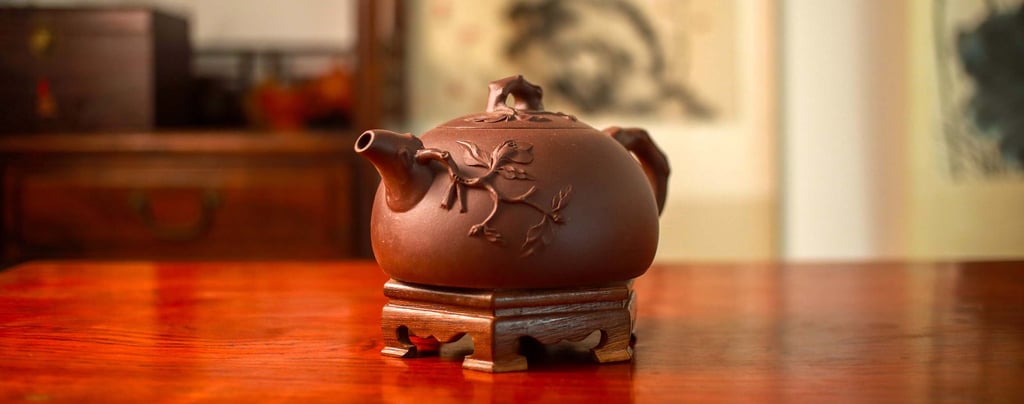What Does a New Type of Tea Gathering Look Like
Explore a new type of tea gathering in modern China, where the "Tea Master's Tea Soup Gratitude Gathering" emphasizes tea as an art form, focusing on the immersive experience and artistry of tea preparation.
TEA LIFE
Ever thought about what modern tea gatherings in China are like? I mean, tea’s always been a thing, right? But now, there’s a shift, and it’s all about appreciating the process, the art, and the experience. It’s less about the type of tea or the brewing techniques and more about the moment, the ceremony, and the unique flair of the tea master. These events focus on the artistry behind tea, and I’m all in for that. But, what exactly does that mean? Let’s break it down.
A New Perspective on Tea Gatherings in Modern China
The Essence of the Tea Master’s Tea Soup Appreciation Gathering
Picture this: A tea master sets up a minimalist station with just the basics—tea leaves, water, and their teapot. No distractions, no fluff. They invite a small group—usually 7 or 8—into this quiet, almost sacred space. The goal? To deeply experience tea. No talking. Just watching, observing, and appreciating the tea-making ritual.
The tea master doesn’t even introduce the tea or talk about the brewing process. Instead, it’s a silent appreciation of each movement, each moment. The focus shifts to the beauty of the tea leaves, the slow unfolding of the leaves in the water, and the final tea soup that represents the culmination of the whole process.
It’s not about the details but about soaking in the overall beauty of tea and the ceremony.
The Role of the Tea Master
In this new type of tea event, the tea master isn’t just making tea. They’re creating an experience. They’re an artist, and the tea is their medium. In the past, guests might’ve waited for the tea master to come to them. But now? They’re waiting for the tea master’s arrival. And when they do arrive? People stand, bow, and welcome them like they would an artist at the height of their craft.
The tea master then goes about their work, preparing and serving tea, pouring infusion after infusion. When it’s all over, they retreat, and the guests show their appreciation with a round of applause. The tea master is no longer a servant—they’re the creator. And that shift in focus makes all the difference.
Simplifying the Tea Ceremony to Emphasize the Art
One thing you’ll notice in these modern tea events is the minimalist setup. It’s not about extras like flowers, incense, or music—it’s all about the tea. The tools? Just what’s needed: a good teapot (like those awesome Chinese Yixing Zisha teapots) and the tea itself. It’s all about keeping things simple to bring the focus back to the tea.
By eliminating distractions, the event turns into a pure experience of tea-making. It’s about appreciating the craft and the quality of the tea itself, not the extra frills.
Inclusivity and Focus on Tea, Not Identity
One of the most refreshing aspects of these modern gatherings is their inclusivity. It's not about the tea master’s age, gender, or appearance. It’s about their dedication to the art of tea-making. What matters most is the devotion to the craft. The focus shifts away from external factors, and instead, the value lies in the experience—the tea, the ritual, and the process. It’s an inclusive approach that lets the tea be the star.
Conclusion
Modern tea gatherings in China are giving tea culture a whole new vibe. They’re a blend of tradition and creativity, celebrating the artistry of tea in a way that encourages a deeper connection to this centuries-old practice. These events not only help revitalize tea culture but also nurture cultural self-confidence, showing that tea can be a form of expression as much as it is a tradition.
But hey, that doesn’t mean you have to follow these rules. If you find joy in a casual tea gathering or your own personal ritual, that's just as meaningful. The real takeaway here? Tea is about connecting, whether you’re drinking it in silence at a tea master’s gathering or just enjoying a cup with friends.
FAQs
Q1: What’s the main difference between a traditional tea ceremony and this new type of gathering?
A1: The new type of gathering focuses more on the art of the process rather than the specific details like the type of tea or brewing techniques. It’s about experiencing tea as an art form, with the tea master as the artist.
Q2: Why is the tea master treated as an artist?
A2: The tea master is seen as someone who creates a meaningful experience through the tea ceremony. They’re not just serving tea; they’re crafting a unique, immersive experience, which is why they’re treated with respect and reverence.
Q3: What tools are used in modern tea gatherings?
A3: The tea setup is minimalist, with just the essential tools—usually a Chinese Yixing Zisha teapot, tea leaves, and water. There’s no clutter or unnecessary additions like flowers or music, allowing the focus to stay on the tea.
Q4: Are these gatherings only for tea experts?
A4: Not at all! These gatherings are for anyone who appreciates tea and wants to experience it in a deeper, more mindful way. It’s about being present in the moment, whether you’re a tea expert or a beginner.
If you're looking for a fresh, deeper tea experience, this is it. Tea’s not just a drink; it’s an art form. So, if you're ready to dive into this new tea culture, there’s a whole world waiting for you.




